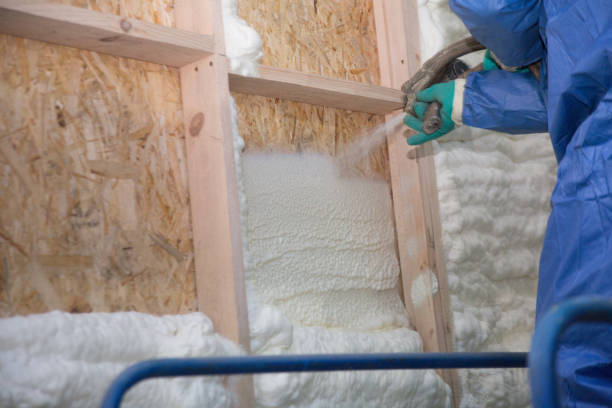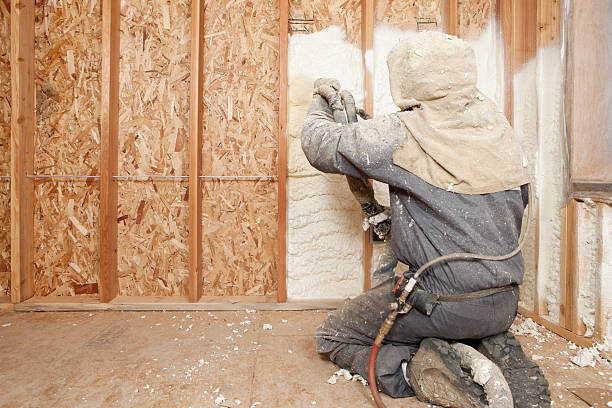Spray Foam Insulation Tampa: A Guide for Homeowners

If you are looking for a way to improve the energy efficiency, comfort, and durability of your home in Tampa, Florida, you might want to consider spray foam insulation. Spray foam insulation is a type of insulation that is applied as a liquid and expands to fill the gaps and cracks in your walls, ceilings, floors, and roof. It creates a continuous air and moisture barrier that prevents heat loss and gain, reduces noise, and protects your home from mold, pests, and fire.
Key Takeaways:
- Spray foam insulation can lower your energy bills by up to 50%, according to some estimates.
- Spray foam insulation can also increase the structural strength of your home, reduce allergens and pollutants, and improve indoor air quality.
- Spray foam insulation has two main types: open-cell and closed-cell. Open-cell is cheaper and softer, but has a lower R-value (a measure of thermal resistance) and is more permeable to moisture. Closed-cell is more expensive and rigid, but has a higher R-value and is more resistant to water and air infiltration.
- Spray foam insulation is not a DIY project. It requires specialized equipment, training, and safety precautions. You should hire a professional contractor who is licensed, insured, and certified by the Spray Polyurethane Foam Alliance (SPFA).
- Spray foam insulation costs more upfront than other types of insulation, but it can pay for itself in the long run through energy savings and reduced maintenance costs.
How Much Is Spray Foam Insulation in Tampa?
The cost of spray foam insulation in Tampa depends on several factors, such as the type of spray foam (open-cell or closed-cell), the thickness of the application, the size and shape of the area to be insulated, the accessibility of the site, the quality of the materials and workmanship, and the local market conditions.
According to HomeAdvisor, the average cost of spray foam insulation in Tampa ranges from $1.50 to $3.50 per square foot. This means that for a typical 1,500-square-foot house with 10-foot ceilings, you can expect to pay between $2,250 and $7,875 for spray foam insulation.
However, this is only a rough estimate based on national averages. The actual cost may vary depending on your specific project details. To get a more accurate quote, you can fill out our contact form or give us a call.
Is Spray Foam Insulation Worth It in Florida?
Spray foam insulation is worth it in Florida for several reasons. First of all, Florida has a hot and humid climate that requires a lot of cooling during most of the year. Spray foam insulation can help you reduce your cooling costs by keeping your home at a comfortable temperature without overworking your air conditioner.
Secondly, Florida is prone to hurricanes and storms that can damage your home's structure and integrity. Spray foam insulation can help you protect your home from wind damage by strengthening your walls and roof. It can also prevent water damage by sealing out moisture and preventing mold growth.
Thirdly, Florida has a lot of allergens and pollutants in the air that can affect your health and comfort. Spray foam insulation can help you improve your indoor air quality by blocking out dust, pollen, smoke, and other contaminants. It can also reduce noise pollution by absorbing sound waves.
Is Spray Foam Insulation Worth the Extra Money?
Spray foam insulation is worth the extra money if you are looking for a long-term investment that will improve your home's performance, comfort, and value. Spray foam insulation has many benefits that outweigh its higher upfront cost, such as:
- Lower energy bills: Spray foam insulation can lower your heating and cooling costs by up to 50%, according to some estimates. This means that you can save hundreds or thousands of dollars per year on your utility bills.
- Higher resale value: Spray foam insulation can increase your home's resale value by making it more attractive to potential buyers who are looking for energy-efficient and durable homes. According to Remodeling Magazine, adding spray foam insulation to your attic can recoup 116% of its cost at resale.
- Longer lifespan: Spray foam insulation can last for decades without sagging, settling, or deteriorating. It does not need any maintenance or replacement like other types of insulation. It also resists pests, fire, and water damage.
- Better comfort: Spray foam insulation can make your home more comfortable by maintaining a consistent temperature throughout the year. It also reduces drafts, cold spots, hot spots, and humidity levels.
- Enhanced health: Spray foam insulation can improve your health by reducing allergens and pollutants in your indoor air. It also prevents mold growth by keeping moisture out of your walls and ceilings.
Is Spray Foam in the Attic Worth It?
Spray foam in the attic is worth it if you want to improve your home's energy efficiency, comfort, and air quality. The attic is one of the most important areas to insulate because it is where most of the heat loss and gain occurs in your home. By applying spray foam insulation to your attic, you can:
- Prevent heat loss in the winter and heat gain in the summer by creating a thermal barrier between your living space and the outside air.
- Prevent air leakage by sealing all the gaps and cracks in your attic that allow conditioned air to escape and unconditioned air to enter.
- Prevent moisture problems by preventing condensation, mold, and mildew in your attic that can damage your roof and compromise your indoor air quality.
What Are the Negatives of Spray Foam?
Spray foam insulation is not without its drawbacks. Some of the negatives of spray foam insulation are:
- High upfront cost: Spray foam insulation is more expensive than other types of insulation, such as fiberglass or cellulose. It also requires professional installation, which adds to the labor cost.
- Difficulty of removal: Spray foam insulation is very hard to remove once it is applied. It adheres strongly to the surface and expands into every crevice. If you need to access or repair any pipes, wires, or ducts behind the insulation, you will have to cut through the foam and patch it up later. If you want to remove the insulation completely, you will have to tear out the drywall or siding along with it.
Where Not to Use Spray Foam Insulation?
Spray foam insulation is a versatile product that can be used in most areas of your home. However, there are some places where you should not use spray foam insulation, such as:
- Electrical boxes: Spray foam insulation can interfere with the electrical wiring and connections in electrical boxes. It can also create a fire hazard if it comes into contact with any sparks or overheated wires. Therefore, you should avoid spraying foam around electrical boxes or use special covers or barriers to protect them.
- Recessed lights: Spray foam insulation can trap heat around recessed lights and cause them to overheat and malfunction. It can also create a fire hazard if the lights are not rated for contact with insulation. Therefore, you should avoid spraying foam around recessed lights or use special covers or barriers to protect them.
- Vented roofs: Spray foam insulation can block the ventilation in vented roofs and cause moisture buildup and mold growth. It can also reduce the lifespan of your roof by causing it to overheat and deteriorate faster. Therefore, you should avoid spraying foam on vented roofs or use special baffles or vents to maintain proper airflow.
How Long Does Spray Foam Last?
Spray foam insulation can last for a very long time if installed correctly and maintained properly. According to some manufacturers, spray foam insulation can last for up to 80 years or more without losing its effectiveness or performance. However, this depends on several factors, such as:
- The type of spray foam: Closed-cell spray foam tends to last longer than open-cell spray foam because it is more dense, rigid, and resistant to moisture and air infiltration.
- The quality of installation: The quality of installation affects how well the spray foam adheres to the surface, fills the gaps, and creates a continuous barrier. A poor installation can result in gaps, cracks, or unevenness that can compromise the insulation's performance and durability.
- The environmental conditions: The environmental conditions affect how well the spray foam withstands exposure to heat, cold, moisture, sunlight, pests, and chemicals. Extreme temperatures, humidity levels, UV rays, rodents, insects, and corrosive substances can degrade the spray foam over time.
Therefore, you should hire a reputable contractor like On The Mark Spray Foam who uses high-quality materials and follows best practices when installing spray foam insulation. You should also inspect your spray foam regularly for any signs of damage or deterioration and repair them as soon as possible.
Conclusion
Spray foam insulation is a great option for homeowners in Tampa who want to improve their home’s energy efficiency, comfort, durability, and value. Spray foam insulation has many advantages over other types of insulation, such as lower energy bills, higher resale value, longer lifespan, better comfort, enhanced health, and increased structural strength.


